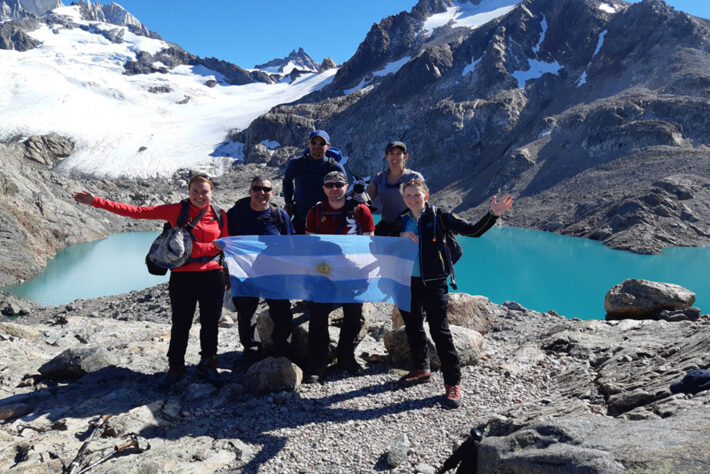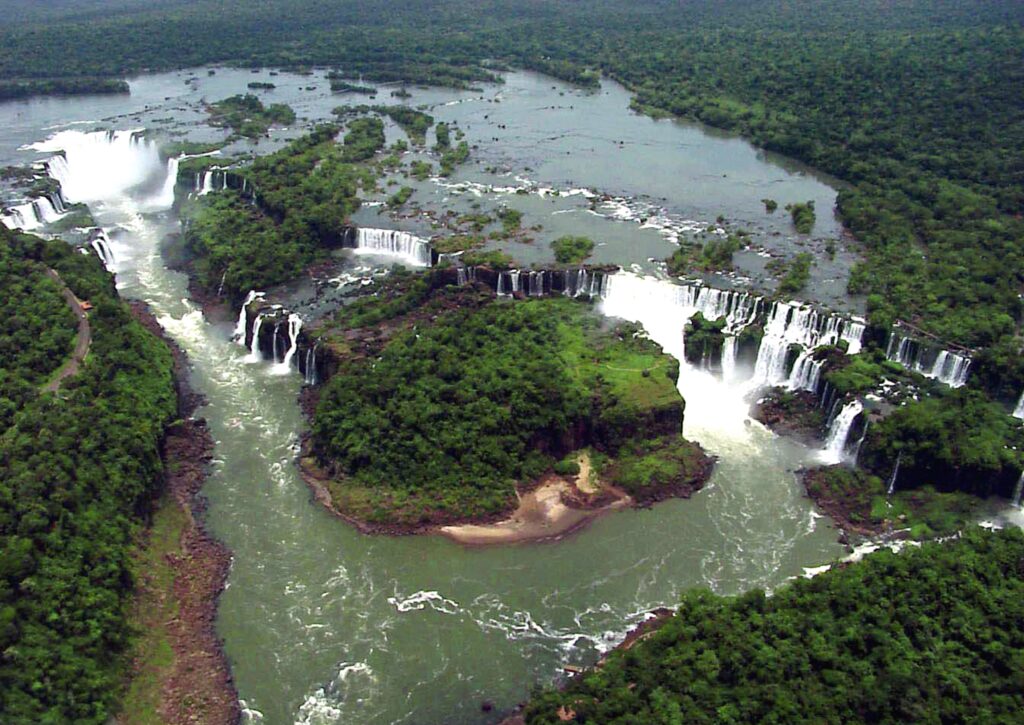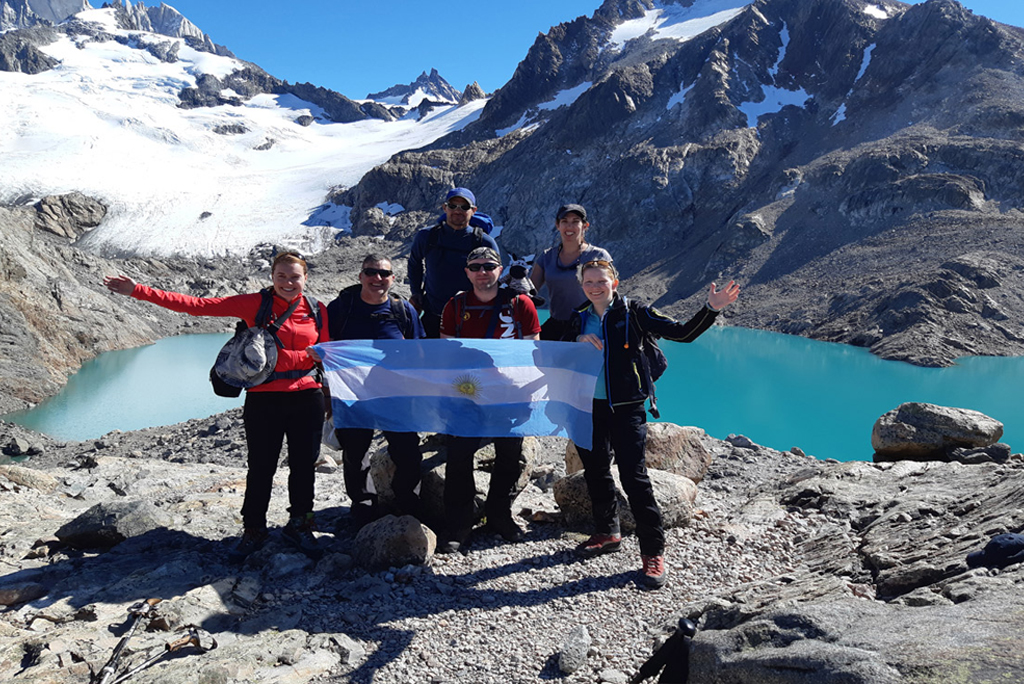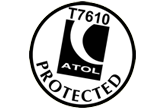Enjoy browsing our trips to Argentina, or click the button below to go to our extended site search.
Argentina Trips


Patagonia Trek – Glaciers and National Parks
Argentina
From El Calafate to Ushuaia, visit Fitz Roy, Cerro Torre, Perito Moreno Glacier, Torres del Paine National Park in Chile and across the Magellan Strait into Tierra del Fuego to visit “city of the end of the world”.
DETAILSArgentina Country Information
Holidays in Argentina offer a diverse and unforgettable experience, bordered by Bolivia, Paraguay, Brazil, Uruguay and not forgetting Chile as they share the southern point of South America. The vast South American Nation is not only home to Buenos Aires the large cosmopolitan capital but also boasts the highest peak of the Andes mountain range, Aconcagua. With our adventure/trekking holiday in Argentina focusing on Patagonia we can assure you that you will get the most memorable experience possible. A Patagonia trekking tour is an active way to admire the natural beauty of the famous Fitz Roy and Cerro Torre mountains, also the unique Perito Moreno Glacier. Taking in the isolated, barren, yet breath-taking spaces is all part of the experience which this Patagonia hiking holiday will offer you, all whilst trekking in and out of the icy mountains. As well as this a visit to the most southern point of the Americas, Tierra del Fuego, is included to finish of this Patagonia travel experience. A Patagonia tour is not one to forget.
Currently we offer one holiday in Argentina which is the Patagonia Adventure trip, this itinerary includes all of the activities above with a few free days to explore as you wish and a few more adventures to discover, for a perfect active holiday. However we can also put together a tailor-made itinerary so that you get to experience your ideal holiday in this remarkable place. The best time to visit Patagonia/Argentina is during their summer months which are from December to February as this is the best time for trekking and the most reliable time of year to visit Tierra del Fuego.
Wherever possible we try to base our approach on responsible travel, therefore to sustain the environment its important that everyone sticks to the strict standards set, for example behaviour if endangered species are encountered such as the Torrent Duck. We also have an agreement with the National Parks to forbid any fires and ensure that only organic produce is left at our camp sites and that ALL other waste is disposed of properly. Regarding the community we only use local guides and support their training and development.
Comprising almost the entire southern half of South America, Argentina is the world’s eighth largest country, covering an area of 2.8 million square km. Argentina possesses some of the world’s tallest mountains, expansive deserts, and impressive waterfalls, with the diversity of the land ranging from wild, remote areas in southern Patagonia to the bustling metropolis of Buenos Aires in the north.
Geography
Argentina is located in the southern extreme of South America. With a continental extension of 2.791.810 Km2.(including Malvinas Islands, other South Atlantic Islands and part of Antarctica). Argentina is the second largest country in South America and the eighth in the world.
Including the Antarctic Sector, Argentina claims a total area of 3.761.274 Km2
It is some 1425 Km across at its widest from east to west and stretches 3.800 Km from the north to the south.
It is bounded by Bolivia and Paraguay on the north, Brasil, Uruguay and the Atlantic Ocean on the east, and by the Atlantic Ocean and Chile on the west and south.
Politics
Argentina is a democratic republic consisting of 23 provinces, the autonomous Federal Capital (whose limits coincide with those of the city of Buenos Aires), the Antarctic sector claimed to be Argentine, the Malvinas Islands, and several South Atlantic Islands.
Economy
The economy of Argentina is an upper middle-income economy, and Latin America’s third largest. The country benefits from rich natural resources, a highly literate population, an export-oriented agricultural sector and a diversified industrial base. An upper-middle income economy, Argentina maintains a relatively high quality of life and GDP per capita. Argentina is considered an emerging market by the FTSE Global Equity Index, and is one of the G-20 major economies.
Argentina’s economic performance has historically been very uneven, in which high economic growth alternated with severe recessions, particularly during the late twentieth century, and income maldistribution and poverty increased. Early in the twentieth century it was one of the richest countries in the world and the third largest in the Southern Hemisphere.
Language
Spanish is the official language and is spoken by the great majority of Argentinians.
English, French and Italian are, in lesser or greater degree, widespread languages within the country
Weather
Argentina has exceptional natural beauties, for it comprises a diverse territory of mountains, plateaux and plains with all the climatic variations
There are several climatic and landscape regions. We will focus on Patagonia seeing as that is where we travel to. Patagonia is the largest region with the coldest climate (especially in the southern part). The west consists mainly of a montaneous landscape peppered with spectacular woods, lakes and glaciers. The centre offers sterile plateaux and the east vast beaches with spectacular and unique colonies of marine animals for sightseeing. The southern extreme of this region makes up the southermost point of the world.
PACKAGES
Argentina
Contact Us
Argentina
PACKAGES


Patagonia Trek – Glaciers and National Parks
Argentina
From El Calafate to Ushuaia, visit Fitz Roy, Cerro Torre, Perito Moreno Glacier, Torres del Paine National Park in Chile and across the Magellan Strait into Tierra del Fuego to visit “city of the end of the world”.
DETAILS






